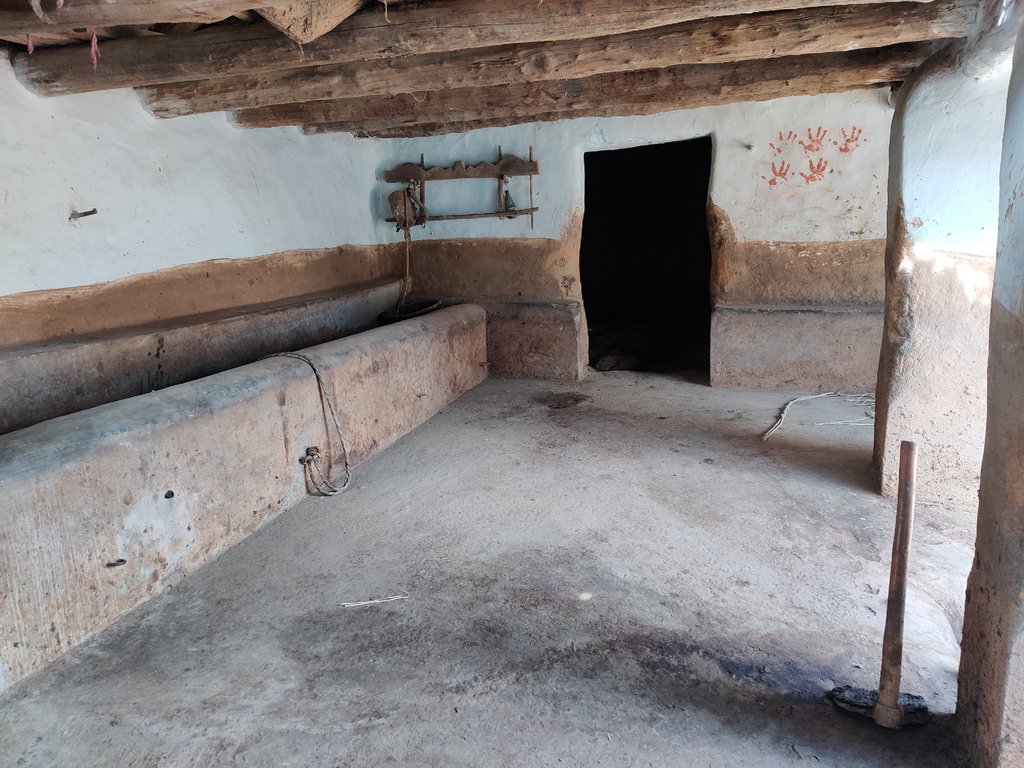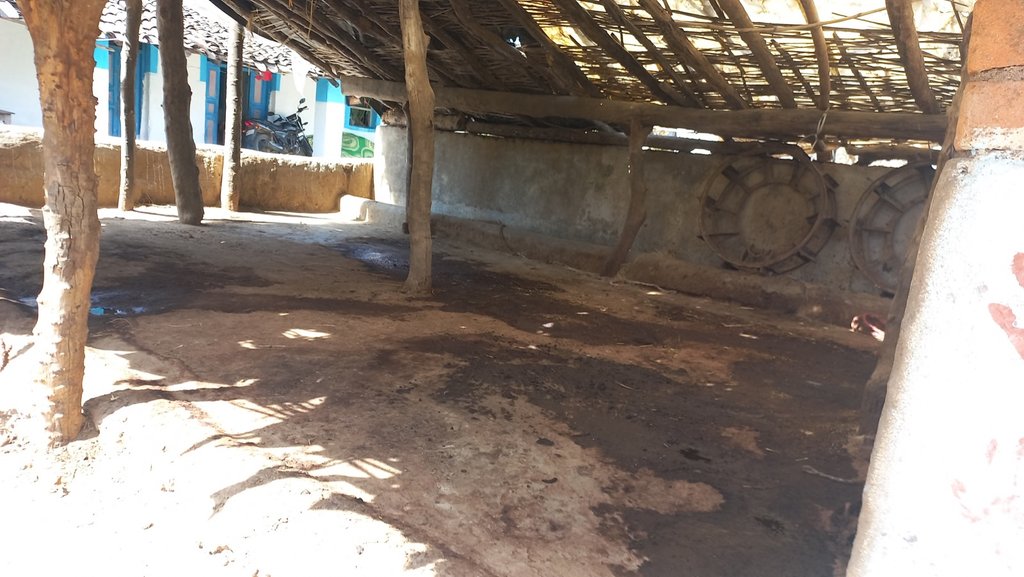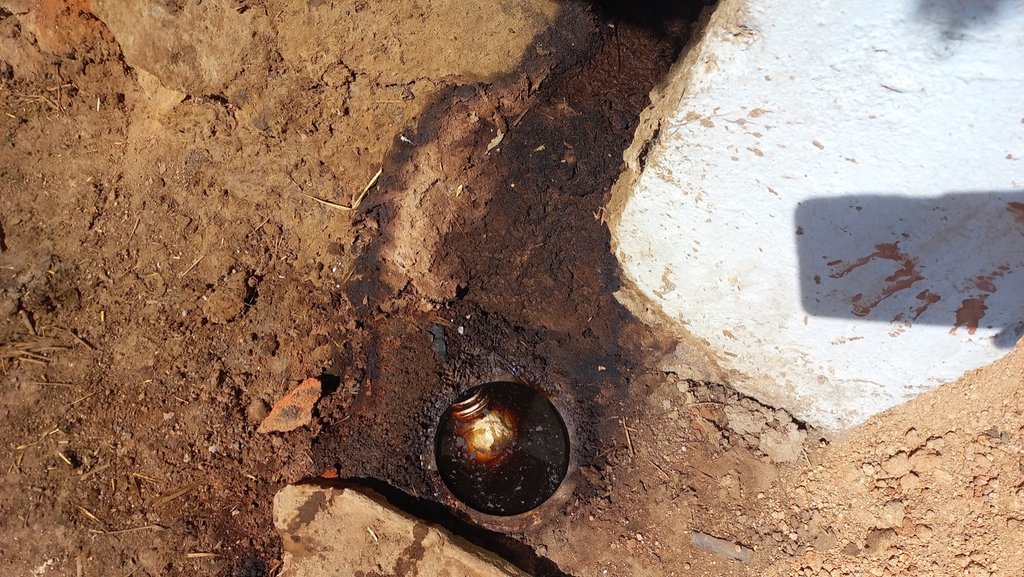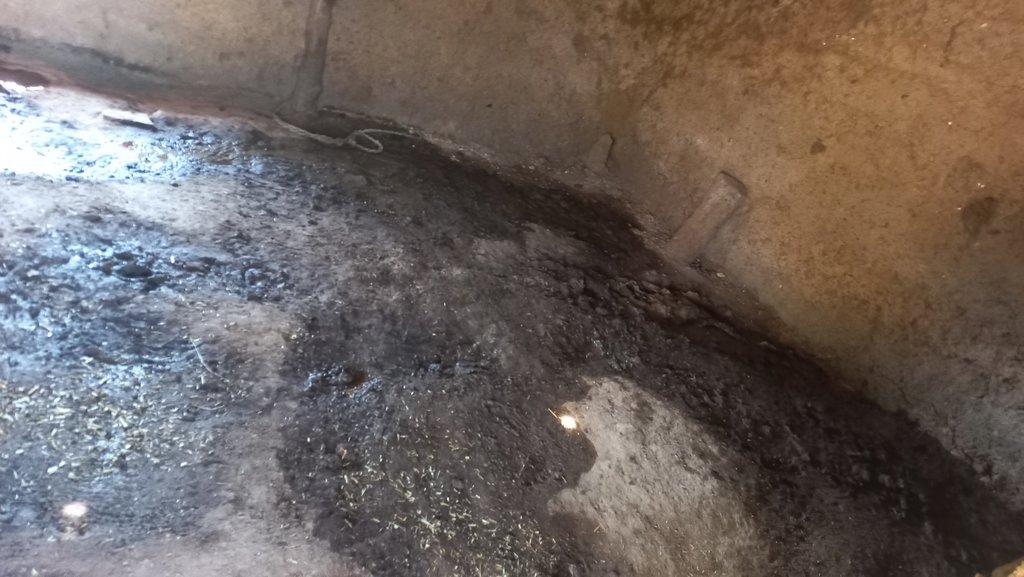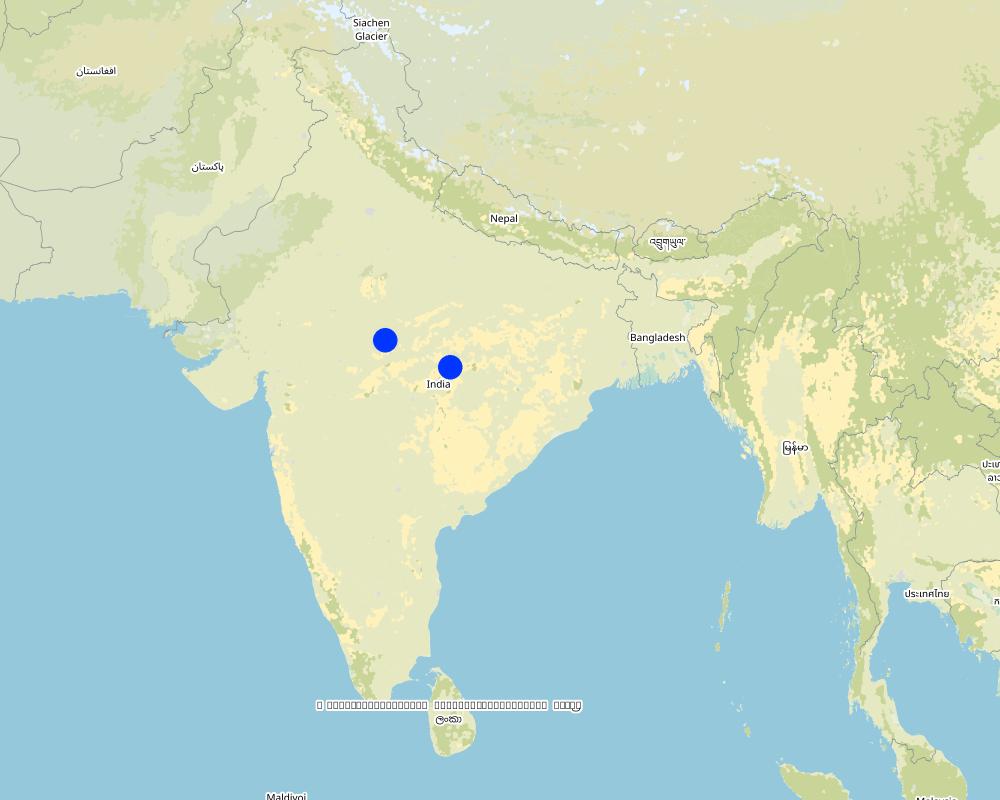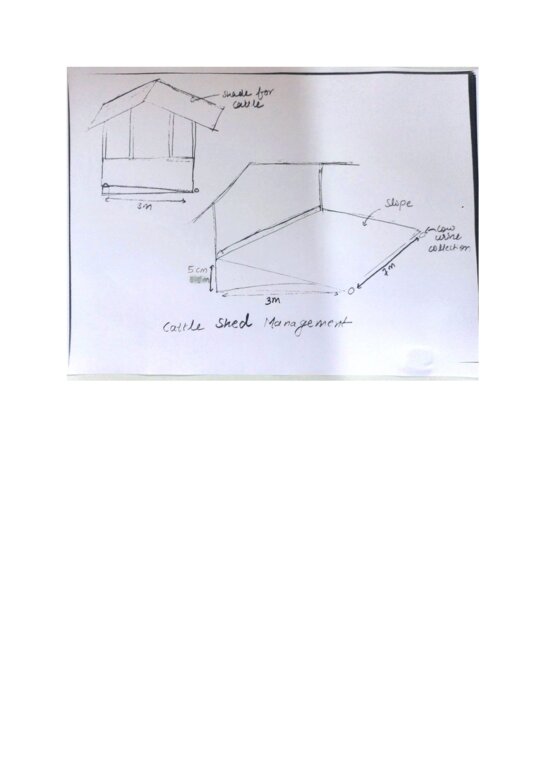Improved Cattle Shed Flooring for Conservation of Cow Dung and Urine for Biofertilizer Production at Farm Level [印度]
- 创建:
- 更新:
- 编制者: Santosh Gupta
- 编辑者: Noel Templer, Stephanie Katsir, Kim Arora
- 审查者: Udo Höggel
technologies_6721 - 印度
- Improved Cattle Shed Flooring for Conservation of Cow Dung and Urine for Biofertilizer Production at Farm Level: June 25, 2023 (inactive)
- Improved Cattle Shed Flooring for Conservation of Cow Dung and Urine for Biofertilizer Production at Farm Level: Sept. 14, 2023 (inactive)
- Improved Cattle Shed Flooring for Conservation of Cow Dung and Urine for Biofertilizer Production at Farm Level: April 11, 2024 (public)
查看章节
全部展开 全部收起1. 一般信息
1.2 参与该技术评估和文件编制的资源人员和机构的联系方式
有助于对技术进行记录/评估的机构名称(如相关)
Deutsche Gesellschaft für Internationale Zusammenarbeit (GIZ) GmbH (GIZ) - 德国有助于对技术进行记录/评估的机构名称(如相关)
Alliance Bioversity and International Center for Tropical Agriculture (Alliance Bioversity-CIAT) - 肯尼亚有助于对技术进行记录/评估的机构名称(如相关)
Ecociate Consultants (Ecociate Consultants) - 印度1.3 关于使用通过WOCAT记录的数据的条件
编制者和关键资源人员接受有关使用通过WOCAT记录数据的条件。:
是
1.4 所述技术的可持续性声明
这里所描述的技术在土地退化方面是否存在问题,导致无法被认为是一种可持续的土地管理技术?:
否
2. SLM技术的说明
2.1 技术简介
技术定义:
In the cattle shed management system, the cattle shed should be constructed with an elevated concrete floor that slopes slightly toward a cow urine collection point. The collection point should be equipped with a drainage system to easily remove cow dung and urine.
An elevated concrete floor for cow dung and urine collection can improve hygiene, and waste management, and reduce labour costs in cattle sheds. Collected cow urine and cow dung can be used to prepare biological inputs and compost for nutrient and pest management in agriculture.
2.2 技术的详细说明
说明:
Cattle shed management technology, including the use of a concrete elevated floor for cow dung and urine collection, is a cost-effective and efficient technology to support the natural farming system. This technology can be applied in both natural and human environments. In natural environments, such as rural or agricultural areas, cattle sheds are typically used for dairy and farmyard manure production. The use of this technology can improve the hygiene of cattle and their environment, reduce waste and pollution, and promote the sustainable use of natural resources. The cow dung and urine so collected can be used as fertilizer to improve soil quality, and the improved hygiene of the cattle can reduce the risk of diseases spreading to other animals or humans. The use of this technology can help to reduce the negative impacts of cattle farming on the surrounding environment, such as odours and pollution. It can also improve the hygiene of the cattle and their environment, which is important for both animal welfare and public health.
Traditionally farmers were constructing the floors of cattle sheds using mud and soil. These floors absorb the cow urine and the movement of animals also makes holes in it because of that cow urine and cow dung are used to get filled in these halls. Which made the entire floor unhygienic for both animals and farmers. Because of such surfaces, it was very hard to clean these sheds. The use of an elevated floor made with cement-concrete and a waste management system can help to keep the cattle shed clean and dry, which can reduce the risk of disease and infection among the animals. The collection and disposal of cow dung and urine can help preventing environmental pollution, reducing the negative impacts of cattle farming on the surrounding area, and promoting sustainable use of natural resources. The use of a concrete elevated floor can make cleaning the cattle shed faster and easier, reducing labour costs and improving the efficiency of the farming operation.
Technical specifications for the construction of cattle sheds can vary depending on factors such as the size of the herd, local environmental regulations, and available resources. However, in general, the main characteristics and elements of cattle shed management technology are designed to promote animal welfare, hygiene, waste management, and sustainability. Proper cattle shed management technology can provide a comfortable and safe environment for the animals, which can reduce stress and promote animal welfare. Proper waste management and ventilation can help to minimize unpleasant odours from the cattle shed, which thus reduces negative impacts on the surrounding community.
Establishing and maintaining cattle shed management technology requires a combination of technical expertise, labour, and resources. By investing in these inputs, farmers can promote sustainable and efficient cattle farming practices and improve the health and welfare of their animals.
The collected cow urine and cow dung are the main resources for preparing the biological inputs and different types of compost for meeting the nutritional requirement of crops while also addressing the challenges of pest and disease management in a natural or organic farming system. The improved flooring of cow shed units has been a great intervention to replace and reduce the usage of synthetic fertilisers and pesticides in the project region.
The views of land users, such as farmers or livestock keepers, about cattle shed management technology, including the use of a concrete elevated floor for cow dung and urine collection, can vary depending on their experiences and perceptions. The interviewed land user liked or appreciated, cattle shed management for improving animal health and productivity, increasing farm profitability, cleaning the cattle shed easier and faster, reducing labour costs, improving efficiency, and for environmental benefits.
2.3 技术照片
2.4 技术视频
注释、简短说明:
https://youtube.com/watch?v=Gd6u8yZ9DqY&si=EnSIkaIECMiOmarE
日期:
01/02/2021
位置:
Mandla, Madhya Pradesh, India
摄影师的名字:
Soil Matters
2.5 已应用该技术的、本评估所涵盖的国家/地区/地点
国家:
印度
区域/州/省:
Madhya Pradesh
有关地点的进一步说明:
Mandla District
具体说明该技术的分布:
- 适用于特定场所/集中在较小区域
技术现场是否位于永久保护区?:
否
注释:
The technology is being adopted by more than 100 farmers across the 10-15 villages of the Bichhiya block in Mandla District of Madhya Pradesh
Map
×2.6 实施日期
如果不知道确切的年份,请说明大概的日期:
- 不到10年前(最近)
2.7 技术介绍
详细说明该技术是如何引入的:
- 通过项目/外部干预
注释(项目类型等):
Initially, the project supported the farmers in the construction of cemented cow shed floors in a limited area. However, there has also been investment from the users either by putting extra funds to extend the area or by contributing labour.
3. SLM技术的分类
3.1 该技术的主要目的
- 改良生产
- 减少、预防、恢复土地退化
- 保护生态系统
- 创造有益的经济影响
- Control cattle diseases
3.2 应用该技术的当前土地利用类型
同一土地单元内混合使用的土地::
否

农田
- 一年一作
年作 - 具体指明作物:
- 谷物类 - 玉米
- 谷类 - 水稻(湿地)
- 谷类 - 小麦(冬季)
- legumes and pulses - lentils
- 油料作物 - 向日葵、菜籽、其他
- 蔬菜 - 叶菜(色拉、卷心菜、菠菜和其他)
每年的生长季节数:
- 2
具体说明:
In kharif (summer) season farmers are sowing paddy in wetlands and in rabi (winter) season wheat, chickpea, mustard, maize and other vegetables
采用间作制度了吗?:
是
如果是,说明哪些作物是间作的:
Chickpea intercropping with beans, mixed cropping system of vegetables present
采用轮作制度了吗?:
是
如果是,请具体说明:
Rice- Chickpea
Rice-Wheat
Rice- Maize
注释:
The intervention is mostly focused on improved cattle shed units. However, collected cow urine and cow dung are good for restoring the degraded agricultural land.
3.3 由于技术的实施,土地使用是否发生了变化?
由于技术的实施,土地使用是否发生了变化?:
- 否(继续问题3.4)
3.4 供水
该技术所应用土地的供水:
- 混合雨水灌溉
注释:
For irrigation, most of the farmers were dependent upon rain in the Kharif and Rabi season. Some of the farmers were using additional irrigation during critical crop stages by using water canals.
3.5 该技术所属的SLM组
- 农畜综合管理
- 土壤肥力综合管理
3.6 包含该技术的可持续土地管理措施

农艺措施
- A2:有机质/土壤肥力
- A6:残株管理
A6:对残株管理作出具体说明:
A 6.4:保留

结构措施
- S9:动植物庇护所

管理措施
- M6:废物管理(回收、再利用或减少)
注释:
The implemented technology led to the management and use of waste for productive purposes. While it has improved the productivity of animals by reducing the occurrence of diseases, it has also enabled the preparation of organic inputs to replace the synthetic fertilisers in farming.
3.7 该技术强调的主要土地退化类型

化学性土壤退化
- Cn:肥力下降和有机质含量下降(非侵蚀所致)

生物性退化
- Bp:害虫/疾病增加,捕食者减少

水质恶化
- Hp:地表水水质下降
- Hq:地下水水质下降
注释:
Proper collection of cow dung and cow urine minimised run-off these substance and mixing with surface water used for various purposes including drinking water.
3.8 防止、减少或恢复土地退化
具体数量名该技术与土地退化有关的目标:
- 防止土地退化
- 减少土地退化
注释:
Application of cow urine and cow dung in soil by mixing with other organic matters improves the soil health and also reduces the dependency on synthetic fertilisers and pesticides
4. 技术规范、实施活动、投入和成本
4.1 该技术的技术图纸
技术规范(与技术图纸相关):
Dimensions of the cowshed (depending on the number of cows kept):
Length: 7m
Width: 3m
Elevated: 5 cm (means in effect the slope: i.e. the front floor of the cowshed is 5 cm higher than the floor at the end, where dung and urine get collected)
作者:
Payal Dewangan
日期:
22/02/2023
4.2 有关投入和成本计算的一般信息
具体说明成本和投入是如何计算的:
- 每个技术单元
指定单位:
one cattle shed
指定单位面积(如相关):
meter
其它/国家货币(具体说明):
Indian Rupee
如相关,注明美元与当地货币的汇率(例如1美元=79.9巴西雷亚尔):1美元=:
82.24
注明雇用劳工的每日平均工资成本:
240
4.3 技术建立活动
| 活动 | 时间(季度) | |
|---|---|---|
| 1. | Concrete floor construction for cattle shed | March |
| 2. | Cattle shed roof development | April |
4.4 技术建立所需要的费用和投入
如果您无法分解上表中的成本,请估算建立该技术所需要的总成本。:
28000.0
如果土地使用者负担的费用少于100%,请注明由谁负担其余费用:
Gram Paryavaran Samiti and Prakritik Sansadhan Prabhandhan Samiti
注释:
Village groups were formed for the implementation of the technology
4.5 维护/经常性活动
| 活动 | 时间/频率 | |
|---|---|---|
| 1. | Cleaning of concrete floor | Once in a day |
| 2. | Collection of cow dung | Once in a day |
| 3. | collection of cow urine from the pit or drum | Twice in a week |
| 4. | Fodder and drinking water provision | Twice in a day |
4.7 影响成本的最重要因素
描述影响成本的最决定性因素:
Design and technical specifications: The cost of the technology can vary depending on the design and technical specifications of the cattle shed, including the size and materials used.
Construction materials and labor costs: The cost of construction materials and labor can vary depending on local market conditions and availability.
Location: The cost of transporting materials and labor to the construction site can vary depending on the location of the farm.
Maintenance and repair costs: The cost of maintaining and repairing the cattle shed can also add to the overall cost of the technology.
Training and capacity building: Providing training and capacity building to farmers and workers on proper cattle shed management techniques can add to the overall cost of the technology.
5. 自然和人文环境
5.1 气候
年降雨量
- < 250毫米
- 251-500毫米
- 501-750毫米
- 751-1,000毫米
- 1,001-1,500毫米
- 1,501-2,000毫米
- 2,001-3,000毫米
- 3,001-4,000毫米
- > 4,000毫米
指定年平均降雨量(若已知),单位为mm:
1427.00
有关降雨的规范/注释:
Highest rainfall occurs between June to September.
注明所考虑的参考气象站名称:
Mandla, Madhya Pradesh
农业气候带
- 半干旱
The climate of the District is tropical, with moderate winters, severe summers, and well-distributed rainfall received from the southwest monsoon. However, due to higher general elevation and abundance of forests, summer temperatures do not rise as much as in other areas.
5.2 地形
平均坡度:
- 水平(0-2%)
- 缓降(3-5%)
- 平缓(6-10%)
- 滚坡(11-15%)
- 崎岖(16-30%)
- 陡峭(31-60%)
- 非常陡峭(>60%)
地形:
- 高原/平原
- 山脊
- 山坡
- 山地斜坡
- 麓坡
- 谷底
垂直分布带:
- 0-100 m a.s.l.
- 101-500 m a.s.l.
- 501-1,000 m a.s.l.
- 1,001-1,500 m a.s.l.
- 1,501-2,000 m a.s.l.
- 2,001-2,500 m a.s.l.
- 2,501-3,000 m a.s.l.
- 3,001-4,000 m a.s.l.
- > 4,000 m a.s.l.
说明该技术是否专门应用于:
- 不相关
关于地形的注释和进一步规范:
The topography of the project area consists of a hilly area and a forest area. Mandla District is hilly and forested (Satpura hill range) and highly undulating with a narrow strip of cultivated plains in the valley portion of the river. The plateau is in the northern part formed by basalt, and east-west trending hills in the southern part. The highest elevation is 934 m amsl in the northern part, and the lowest is around 400 m amsl in the northwestern part of the area. The elevation of the studied block Bichhiya is 453 m amsl.
Source: District at a Glance; Ministry of Water Resources, Government of Madhya Pradesh
5.3 土壤
平均土层深度:
- 非常浅(0-20厘米)
- 浅(21-50厘米)
- 中等深度(51-80厘米)
- 深(81-120厘米)
- 非常深(> 120厘米)
土壤质地(表土):
- 粗粒/轻(砂质)
- 中粒(壤土、粉土)
土壤质地(地表以下> 20厘米):
- 中粒(壤土、粉土)
表土有机质:
- 低(<1%)
如有可能,附上完整的土壤描述或具体说明可用的信息,例如土壤类型、土壤酸碱度、阳离子交换能力、氮、盐度等。:
Soil Testing Parameter status (Average) 2017-20 for the project areas is as follows. This data is based on the soil samples tested by the FES in its soil labs from the project villages.
Sail pH:-5.906548628; EC (electrical conductivity): 0.122993577: Soil Organic Carbon: 0:83%; Nitrogen:- 293.3696598; Phosphorus:- 25.77762582; Potassium (K):- 139.6696636: Sulphur
(S)-18.93457993; Zinc (Zn):-0.955246706; Boron (Bn):-0.490850376
5.4 水资源可用性和质量
地下水位表:
> 50米
地表水的可用性:
中等
水质(未处理):
不良饮用水(需要处理)
水质请参考::
地下水和地表水
水的盐度有问题吗?:
否
该区域正在发生洪水吗?:
否
关于水质和水量的注释和进一步规范:
The groundwater status is within the safe limits as per the reports by the Government of Madhya Pradesh. People use water from rivers, streams, and traditional small wells for domestic purposes. In the absence of good vegetative cover, the rainwater washes off the fertile topsoil from the farmlands making the land barren and resulting in the siltation of ponds and other water bodies. Further, a heavy infestation of invasive species such as Lantana Camara compounds the degradation.
The studied block Bichhiya is in a better position in terms of stage of groundwater development with 17%, stage of groundwater development refers to the % of groundwater being used for various purposes from the available groundwater in that area e.g. net annual groundwater availability in Bichhiya block is 9087 ham (hectare meters) while the existing annual groundwater draft for all usage is 1523 ham, making it a 17% groundwater development stage, while the district average is 79%.
Source: http://cgwb.gov.in/District Profile/MP/Mandla.pdf
5.5 生物多样性
物种多样性:
- 高
栖息地多样性:
- 高
关于生物多样性的注释和进一步规范:
The cattle shed management unit or center is present nearby the forest area of Kanha National Park. There is high biodiversity present in the technology implementation area. Ecological assessment report in Mandla (where this Technology is applied) showed improved biodiversity on common lands under village governance compared to open-access or commons under government ownership. On average, the Shannon Diversity Index of managed common lands was 1.45 compared to 0.42 for the open access of ungoverned commons. Most of the sites under open access lands are infested by Lantana Camara, which is the main reason for the lower biomass and diversity of the ungoverned lands.
5.6 应用该技术的土地使用者的特征
定栖或游牧:
- 定栖的
生产系统的市场定位:
- 混合(生计/商业)
非农收入:
- > 收入的50%
相对财富水平:
- 贫瘠
个人或集体:
- 团体/社区
机械化水平:
- 手工作业
- 畜力牵引
性别:
- 女人
- 男人
土地使用者的年龄:
- 青年人
- 中年人
5.7 应用该技术的土地使用者使用的平均土地面积
- < 0.5 公顷
- 0.5-1 公顷
- 1-2 公顷
- 2-5公顷
- 5-15公顷
- 15-50公顷
- 50-100公顷
- 100-500公顷
- 500-1,000公顷
- 1,000-10,000公顷
- > 10,000公顷
这被认为是小规模、中规模还是大规模的(参照当地实际情况)?:
- 小规模的
5.8 土地所有权、土地使用权和水使用权
土地所有权:
- 个人,有命名
土地使用权:
- 个人
用水权:
- 社区(有组织)
- 个人
土地使用权是否基于传统的法律制度?:
是
具体说明:
Some of the land parcels are ancestral land units while some have been transferred into private ownership by the State Government over the years
5.9 进入服务和基础设施的通道
健康:
- 贫瘠
- 适度的
- 好
教育:
- 贫瘠
- 适度的
- 好
技术援助:
- 贫瘠
- 适度的
- 好
就业(例如非农):
- 贫瘠
- 适度的
- 好
市场:
- 贫瘠
- 适度的
- 好
能源:
- 贫瘠
- 适度的
- 好
道路和交通:
- 贫瘠
- 适度的
- 好
饮用水和卫生设施:
- 贫瘠
- 适度的
- 好
金融服务:
- 贫瘠
- 适度的
- 好
6. 影响和结论性说明
6.1 该技术的现场影响
社会经济效应
生产
作物生产
注释/具体说明:
It was observed and noted from the field site that instead of using chemicals, the application of cow urine and cow dung in the form of farm yard manure has helped in improved production as it led to the reduction of pest infestation and better nutrient uptake from the soil.
作物质量
注释/具体说明:
Reduction in the use of chemicals in the field and application of collected cow urine and other bioresource products made from cow dung helped in improving the quality of crop in terms of harder crops, good weight of grain, test etc.
畜牧生产
注释/具体说明:
The improved cattle shed played a crucial role in maintaining the hygiene of animal sheds, which led to the lesser occurrence of disease among animals. Also, the stress level of animals due to the presence of insects and flies reduced significantly. A combination of all these factors improved the milk yield.
生产故障风险
注释/具体说明:
Using sustainable methods for crop production by application of bio inputs not only helps in increasing soil fertility but also contributes to increasing crop resistance, pest control, and better crop development.
产品多样性
收入和成本
农业投入费用
注释/具体说明:
Reduced to some extent as now farmers can make their own bio-inputs using the cow urine and cow dung collected from the cattle shed
农业收入
注释/具体说明:
A combination of improved productivity, reduced cost towards agriculture inputs and better milk productivity has helped farmers in improving their income.
收入来源的多样性
注释/具体说明:
Some of the farmers have initiated their own bio resource centres to sell cow urine and cow dung-based bio-inputs, vermicompost etc.
工作量
注释/具体说明:
The workload of women members in the household was reduced very significantly due to covering the mud-based cow floor with cement-concrete-based cow floor, earlier cleaning of the cow dung and cow urine used to take a lot of the time. However with new floor, it can be cleaned in less than 5 minutes saving almost an hour in a day.
社会文化影响
食品安全/自给自足
健康状况
注释/具体说明:
Improved hygiene is good for both animal and human health
文化机会
社区机构
生态影响
土壤
土壤水分
注释/具体说明:
Application of cow dung, compost and other bio-inputs have improved the soil moisture
养分循环/补给
注释/具体说明:
Application of cow dung, compost and other bio-inputs will help in improving the nutrient cycling in the soil and will enhance the soil microbial activities
减少气候和灾害风险
碳和温室气体的排放
注释/具体说明:
Some of the farmers are using the collected cow dung as an input for their 'Bio-gas' plants. Thus, the use of biogas plants not only reduces the use of fire wood and LPG for cooking but its waste (slurry) is also used as inputs for agriculture fields. Thus reducing the overall footprint of GHG emission.
6.2 该技术的场外影响已经显现
对邻近农田的破坏
温室气体的影响
注释/具体说明:
Some of the farmers have installed bio gas plants. Use of biogas plants not only reduces the use of fire wood and LPG for cooking but its waste (slurry) is also used as inputs for Some of the farmers are using the collected cow dung as an input for their 'Bio-gas' plants agriculture fields. Thus reducing the overall footprint of GHG emission.
Also the improved floor have helped in proper collection of cow dung and cow urine for the purpose of composting. Composting makes the compounds in manure more stable and therefore reduces the amount that is released into the atmosphere.
6.3 技术对渐变气候以及与气候相关的极端情况/灾害的暴露和敏感性(土地使用者认为的极端情况/灾害)
渐变气候
渐变气候
| 季节 | 增加或减少 | 该技术是如何应对的? | |
|---|---|---|---|
| 年温度 | 增加 | 非常好 |
6.4 成本效益分析
技术收益与技术建立成本相比如何(从土地使用者的角度看)?
短期回报:
消极
长期回报:
积极
技术收益与技术维护成本/经常性成本相比如何(从土地使用者的角度看)?
短期回报:
轻度消极
长期回报:
非常积极
注释:
Low maintenance cost compared with benefits of higher animal productivity and hygienic living
6.5 技术采用
- 1-10%
在所有采用这项技术的人当中,有多少人是自发的,即未获得任何物质奖励/付款?:
- 0-10%
6.6 适应
最近是否对该技术进行了修改以适应不断变化的条件?:
否
6.7 该技术的优点/长处/机会
| 土地使用者眼中的长处/优势/机会 |
|---|
| Reduced labour of urine and dung collection |
| Better animal management |
| 编制者或其他关键资源人员认为的长处/优势/机会 |
|---|
| Reduced GHG emission because of better handling of dung and urine |
| Increased productivity because of the use of animal manure |
6.8 技术的弱点/缺点/风险及其克服方法
| 土地使用者认为的弱点/缺点/风险 | 如何克服它们? |
|---|---|
| High establishment cost | Subsidies and grants |
| Regular maintenance cost | Technological innovation |
| 编制者或其他关键资源人员认为的弱点/缺点/风险 | 如何克服它们? |
|---|---|
| Possibilities of disadoption because of maintenance cost | Increase returns of the units by extending new products from Urine and dung |
| No demand | Increase communication and extension on the benefits of different products from animals |
7. 参考和链接
7.1 信息的方法/来源
- 与土地使用者的访谈
7.2 参考可用出版物
标题、作者、年份、ISBN:
Repairing cattle shed floor
可以从哪里获得?成本如何?
Foundation for Ecological Security, Mandla, MP, India
7.3 链接到网络上的相关信息
标题/说明:
Cattle sheds: one intervention, several benefits for farmers
URL:
https://www.youtube.com/watch?v=Gd6u8yZ9DqY
链接和模块
全部展开 全部收起链接
无链接
模块
无模块



